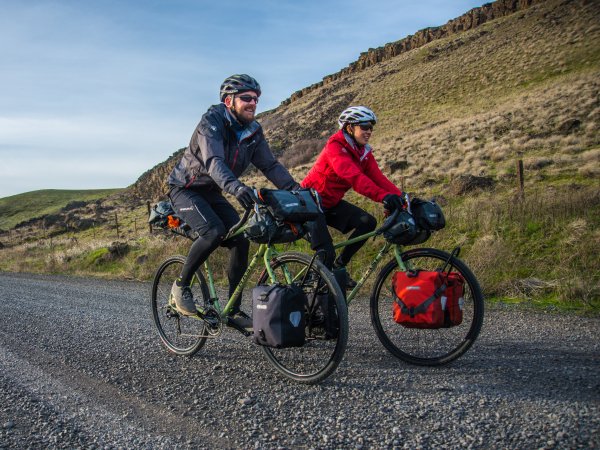As little as possible, as much as necessary. That's the credo of bikepacking. Always ask yourself the question: What can I leave out if necessary? What equipment saves space and weight?
The question: "What do I need to take with me?" depends crucially on the length of the trip. It's more fun to cycle through the countryside without a tent, cooking equipment and all your provisions. However, this also noticeably restricts your flexibility when choosing the route and its length. A mini tent, in which the bike also becomes the tent poles, can help, such as the "Bikecamper" from Topeak. This not only saves up to 1.5 kilograms of luggage, but also effectively protects your bike from theft at night.
The position of the luggage on the bike has a direct effect on the ride quality. For example, many gravel bikes have eyelets or threads for a rear rack. However, smaller bags distributed around the bike maintain the weight distribution that is important for off-road riding and take the strain off the frame.
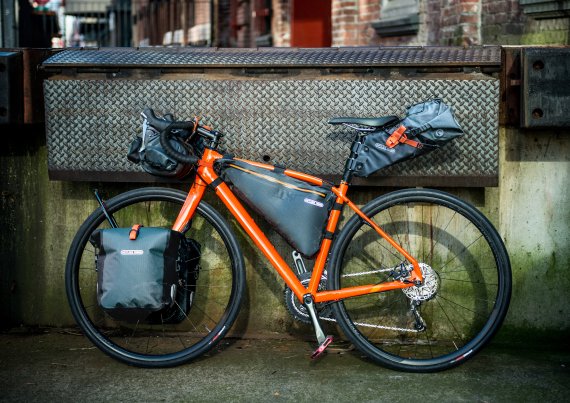
Manufacturers such as ISPO Award winner Ortlieb also offer compact bags for saddle, frame, handlebars and fork with an amazingly small pack size.
With gravel bikes, there are occasional carrying passages where the bike weight rests on a continuous soft pad. The important thing here is to push everything heavy deep into the bag. This way you avoid strong pendulum and rocking movements.
Outdoor emotions on the big screen
Come to OutDoor by ISPO from 3-5 June 2024 and experience the adventures of fellow outdoor enthusiasts in large format! The new OutDoor by ISPO Cinema powered by EOFT will show you the most daring stunts and captivating stories from past European Outdoor Film Tour (EOFT) seasons. An additional highlight will be the presentation of the 21st Century Adventurer Award to this year's winner. We've already got the popcorn ready!
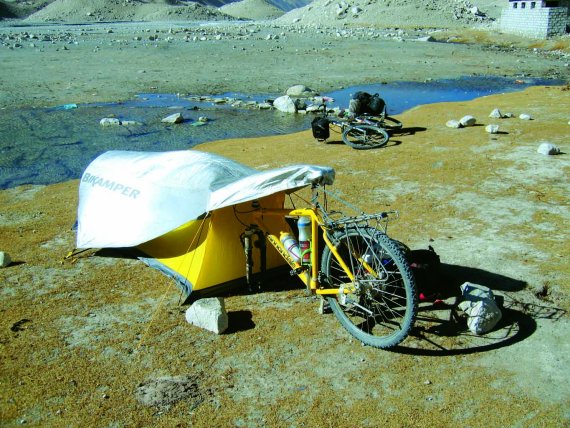
The water bottle on the frame is a classic. But there are much better solutions: Firstly, bottles on the frame prevent the bike from being easily shouldered, and secondly, special bottles with protected drinking valves are required off-road. Small hydration packs or "hydration vests", as worn by trail runners, are better than bottles on the frame when bikepacking.
A 1.5-liter hydration bladder with a tube on the back, two soft flasks and an abundance of small and easily accessible pockets around the upper body keep drinks, bars, tools or electronics close to the body. They are less likely to get shaken up, are difficult to freeze in winter and are always easy to reach. Another plus point: the bike bags can remain closed in the "open field". The contents stay dry and clean.
As tempting as it is to simply stow your heaviest luggage in a rucksack on your back, it is impractical on long bike rides. This is because heavier backpacks change your posture on the bike to such an extent that muscular problems quickly occur, even if the backpack feels good.
Heavy backpacks can also restrict your mobility. For fast sections, they also hinder aerodynamics as they make it impossible to adopt a strongly bent position. And: the back hardly gets any ventilation when riding with a backpack.
Ultralight backpacks without a carrying frame can be a good compromise here.
There is no single method for loading a gravel bike. However, there are a few basic rules to prevent nasty surprises on the road:
- Top rule: the seating position and pedaling motion must not be altered for the luggage. If something is in the way, it must give way to the rider.
- Attach a maximum of around a third of the luggage to the handlebars and forks so as not to impair steering.
- Load as low as possible to keep the center of gravity dynamic.
- Before each start, briefly check that everything is secure. If you have removed something from a bag, for example, it may be more unstable and protrude into the spokes, brakes or cranks.
- The heavier an object is, the closer it should be attached to the center of the wheel. Even within a bag, it is important to pack massive objects towards the center.
- Pay attention to the width. Gravel routes can lead through narrow rocky or undergrowth passages, so the bags should not be wider than the handlebars.
- Be careful with handlebar bags on gravel bikes: if the bag is too wide or not firmly secured, your fingertips can be crushed or the brake levers blocked.
The more variable individual items are, the less you need to take with you. Arm and leg warmers plus a rain jacket with detachable sleeves turn a jersey set into a universal kit.
You should think about the following equipment when bikepacking:
- Clothing for all likely conditions
- Tools and repair materials, especially for tires and chains
- Small first-aid kit and, for long tours, buttock cream and sun protection
- Compact toiletries such as a microfiber towel
- (emergency) lighting and/or reflective clothing in case the schedule gets out of hand
- Wallet, preferably waterproof or in a zip bag with ID, emergency contact, cash card, cash depending on the region and coins, e.g. for vending machines or the (self) car wash
- An old toothbrush and so-called dry lubricant (collects less sand than oil) is sufficient for bike maintenance
- A bikepacking tent is a must for tours lasting several days
- Attention: Gravel bikes often have "tubeless" tires, which require special pumps! An adapter from Sclaverand to car valve is also helpful for refilling at filling stations.
Useful gadgets:
- Multitool with bike tools
- Cable ties / tape
- Powerbank incl. cable
- Long gloves as protection against undergrowth and contact with the ground
- Sunglasses with interchangeable lenses
- 2 - 4 light lashing straps
- Bike lock (depending on accommodation)
- Water-soluble minaral drinks if there is "only" water on the way
- Emergency bars or gels against hunger pangs
- A map with a rough route marked on it in case the electric navigation fails
- A whistle for emergencies in remote places
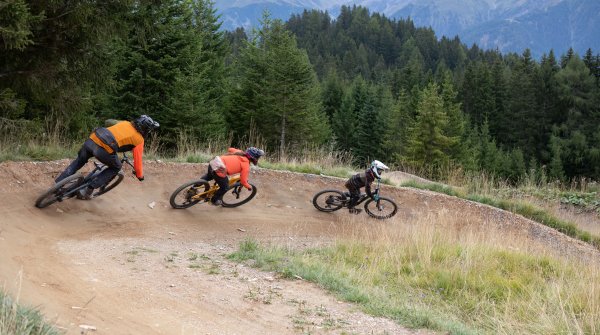
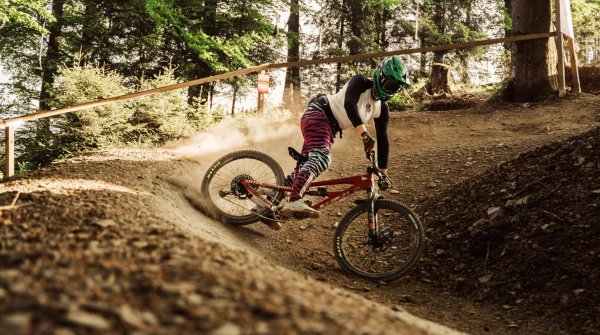 Urban CultureOvercoming and triumph: Freeride Anne's fast-paced ride
Urban CultureOvercoming and triumph: Freeride Anne's fast-paced ride
- ISPO awards
- Mountain sports
- Bike
- Design
- Retail
- Fitness
- Health
- ISPO Job Market
- ISPO Munich
- ISPO Shanghai
- Running
- Brands
- Sustainability
- Olympia
- OutDoor
- Promotion
- Sports Business
- ISPO Textrends
- Triathlon
- Water sports
- Winter sports
- eSports
- SportsTech
- OutDoor by ISPO
- Heroes
- Transformation
- Sport Fashion
- Urban Culture
- Challenges of a CEO
- Trade fairs
- Sports
- Find the Balance
- Product reviews
- Newsletter Exclusive Area
- Magazine
